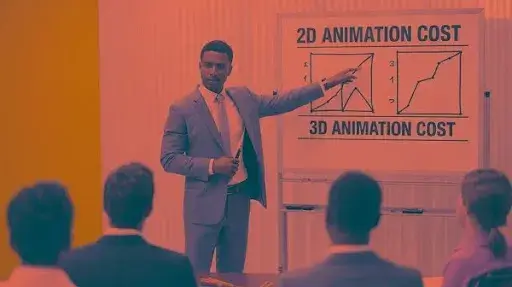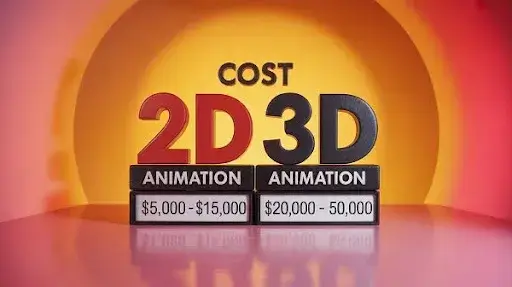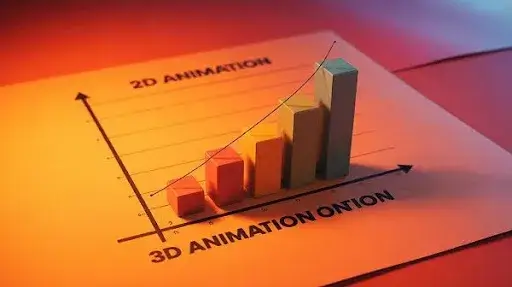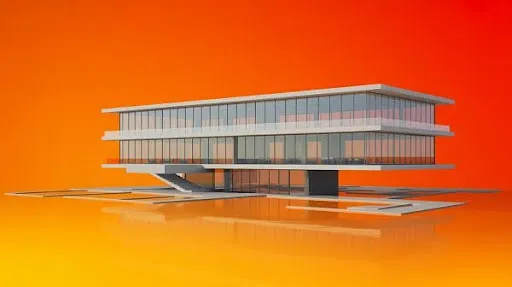Scroll through Instagram, YouTube, or even the ads on your favorite streaming app, and animation dominates. Brands, studios, and creators are leaning into it because it works. But here’s the part people rarely talk about: the price tag isn’t fixed. Ask ten studios for a quote and you’ll probably get ten very different answers.
The real conversation around 2D vs 3D animation cost isn’t “which is cheaper” but “what makes one project cost $5,000 per minute and another $50,000?” The truth is, dozens of moving parts shape that final invoice, and knowing them upfront saves businesses from financial headaches later.
If you’re planning an animated film, a campaign video, or even a quick explainer, the better you understand how 2D animation services and 3D animation services are priced, the easier it becomes to pick the right option for your goals.
A Quick Look at 2D vs 3D Animation Cost
People love clean numbers, so let’s start there.
- 2D animation cost per minute: $5,000 – $25,000
- 3D animation cost per minute: $15,000 – $50,000+
That gap isn’t random. It comes down to how each format is made.
2D animation studios build everything frame by frame, either hand-drawn or digitally. The more complex the scene, characters, props, and backgrounds, the more labor hours it soaks up.
3D animation studios work differently. They have to model, texture, rig, light, and finally render each scene. Reusable assets can cut the bill a little, but as soon as you ask for realism or complex effects, the cost per minute jumps dramatically.
What Goes Into 2D Animation Cost
Entry-Level 2D Work
Flat colors, minimal character movement, simple backdrops. Perfect for quick explainers or ads on social media. Typical range: $5,000 to $10,000 per minute.
Mid-Tier 2D Animation
More polish, better character rigs, richer environments, smoother transitions. Often used in e-learning or brand storytelling. Ballpark: $10,000 to $15,000 per minute.
Premium 2D Animation
Big-budget campaigns, animated series, or film-quality work. Multiple characters, full detail, expressive movement. This can run $20,000–$25,000 per minute or higher.
What Goes Into 3D Animation Cost
Lower-End 3D Animation
Basic models, simple renders, minimal animation. Usually used for product showcases or short intros. Price starts around $15,000 to $25,000 per minute.
Mid-Level 3D Projects
Detailed characters, decent environments, smoother physics, and lighting. Typical commercials or shorts land here, at $25,000 to $50,000 per minute.
High-End 3D Animation
Think blockbuster movie sequences or AAA game cinematics. Realistic textures, simulations, particle effects, the whole package. Easily $50,000+ per minute.
What Drives 2D vs 3D Animation Cost
Complexity of the Animation
The bigger the cast, the richer the background, the more complex the motion, the higher the cost.
In 2D, complexity equals more drawing, shading, and frame adjustments. In 3D, it’s about detailed rigs, textures, and asset creation. Building a realistic 3D human character alone can take weeks before animation even begins.
Animation Style
Not every project aims for realism. A flat, minimal style is far cheaper than detailed anime-style frames or hyper-realistic 3D rendering.
Stylization isn’t just about visuals. It dictates how much detail, rendering time, and manpower are required. The more ambitious the style, the more expensive the production.
Level of Action and Movement
Simple, static shots? Affordable. Multiple characters fighting, dancing, or interacting? The price climbs fast.
In 2D, each added movement is more redrawing. In 3D, it’s about refining rigging, physics, and interactions so nothing looks stiff.
Experience of the Studio
A rookie freelancer might charge half of what seasoned 2D animation studios or 3D animation studios ask. But experience usually means fewer mistakes, tighter workflows, and higher quality. Paying more up front can often save you from paying twice for revisions later.
Software & Tools Cost
2D tools like Adobe Animate or Toon Boom are relatively budget-friendly. For 3D, industry software such as Maya or Cinema4D often requires heavy hardware and long render times, which push costs up.
Studios also factor in things like render farms, plugins, and licenses. These expenses get folded into the final quote.
Audio & Sound Design Cost
No animation feels complete without audio. Voice acting, sound effects, and music add life, but they also add cost.
Hiring professional voice talent or producing an original soundtrack will push budgets upward. Stock audio is cheaper, but it rarely delivers the same impact.
Revisions and Edits Cost
Edits are part of the game, but they’re not free. Most studios allow two or three rounds. After that, each change adds to the bill. Clear storyboards and planning cut down on revision fees.
Tight Deadlines
If you want a project done yesterday, be prepared to pay extra. Studios will need to dedicate more animators, run overnight renders, and shift resources. That urgency always costs more.
Location-Based Pricing
Animation talent is spread across the globe. Studios in the U.S. or Western Europe charge significantly more than equally skilled teams in Southeast Asia or Eastern Europe. While global options exist, going for the cheapest can sometimes compromise quality.
Animation Production Pipeline
Behind the final video lies a chain of steps: scripting, storyboarding, design, animation, rendering, audio, and editing. Skip one, and the project feels incomplete. Follow all of them thoroughly, and the price naturally rises.
High vs Low Detail Work
Details drive time, and time drives cost.
- High-detail 2D animation: Complex shading, expressive characters, layered settings.
- Low-detail 2D animation: Flat colors, minimal frames, often used in short explainers.
- High-detail 3D animation: Realistic textures, fabric folds, hair physics, cinematic lighting.
- Low-detail 3D animation: Simplified models, basic rigs, little texturing.
Every extra detail, wrinkles, reflections, shadows, requires more labor or more render power, which directly inflates animation cost per minute.
Pricing Models and 2D vs 3D Animation Cost
Studios quote in a few different ways. Know the models so you can compare offers fairly.
Per-minute pricing. Common for finished videos. It sounds neat but hides variation. Two one-minute projects can cost wildly different amounts if one is simple and the other is packed with effects.
Per-project pricing. Useful for defined scopes. Good if you have a strict budget. Make sure the scope includes rounds of changes, deliverables, and file formats.
Hourly rates. Handy for open-ended work or small tasks. Good for revisions or touch-ups. Ask for time estimates up front.
Hybrid quotes. Some studios mix methods: a base per-project fee plus hourly for extras. That gives you control and keeps surprises smaller.
When you compare quotes, ask what’s included. Storyboarding? Voiceover? Revisions? Rendering time? The cheapest number is rarely the full story of the true animation cost.
Asset Reuse: A Big Lever on 2D vs 3D Animation Cost
Reusing assets changes the math fast.
In 2D animation, character rigs, background tiles, and cycle animations can be saved and reused. That trims hours in later episodes or ads.
In 3D animation, models, textures, and lighting setups are reusable, too. But high-detail models and realistic textures cost a lot to build in the first place.
If you plan a series of videos, invest in reusable assets. The first video covers the setup costs. Subsequent videos get cheaper. This is one of the clearest ways to lower your cost per minute (2D / 3D) over time.
Hidden Costs to Watch For
Some line items show up late in the process. Watch this shortlist and ask studios about each one.
- Render time and render farms. Heavy 3D scenes need long render jobs and that can be billed separately.
- Licensing for music or stock assets. Royalty-free is cheaper, original score costs more.
- Voice talent rates. Big-name voices command higher fees.
- Deliverable polishing. Color grading, final sound mix, and mastering are small items that add up.
- File formats and source files. Keeping project files is useful but sometimes billed extra.
A clear scope and a checklist at the start reduce surprises and keep your animation cost comparison fair.
Practical Ways to Lower 2D vs 3D Animation Cost
You can control the budget and still get strong results. Try these tactics.
- Lock the script early. Better to polish the script before animation begins. Changes later are expensive.
- Limit revisions. Agree on two rounds of changes. Extra rounds are billed, so plan precisely.
- Choose a smart art style. Stylized work often looks great and costs much less than photo-real aims.
- Reuse assets. Build a character rig once and use it across multiple videos.
- Batch production. Produce multiple short videos in one batch to save on setup and design time.
- Choose the right studio. Match the studio’s strengths to your needs. A studio good at stylized 2D might be cheaper and faster than one focused on photoreal 3D.
- Ask for breakdowns. Request a line-item estimate. That helps you find savings spots.
These choices influence animation complexity and the final invoice more than you might expect.
Animation Cost Comparison: Studio vs Freelance vs Offshore
You’ll see three broad options when hiring.
Local full-service studio. Higher rates, but you get project management, quality checks, and consistent timelines. Good for big campaigns and brand work.
Freelancers. Lower hourly rates. Best for small jobs or specific tasks. Manage them closely to avoid scope creep.
Offshore teams. Cost-effective for steady, repeatable work. Pick well-reviewed studios and ask for samples and references.
Price alone shouldn’t be the deciding factor. Think about communication, timezone overlap, and how important tight control of the process is to you.
Case Examples
These are not quotes but realistic ranges to help planning.
- Explainer video, flat 2D, single character, light motion: $6,000–$9,000 for one minute.
- Product demo, low-detail 3D, single object, camera moves: $18,000–$30,000 per minute.
- Brand film, mid-tier 2D, multiple scenes, voiceover: $12,000–$18,000 per minute.
- Short cinematic, high-detail 3D, one-minute hero shot: $60,000+ per minute.
Use these as a reference when you get quotes. They help you spot outliers and unrealistic low bids.
Frequently Asked Questions
Can I get a single flat rate to cover everything?
Yes. Studios offer fixed-price deals if the scope is very clear. The clearer you are, the safer a flat fee becomes.
How much does voiceover add to the budget?
A basic voiceover can cost a few hundred dollars. Professional actors and studio recording add thousands. Ask for auditions and raw takes.
Do studios charge for storyboards?
Some include storyboards in the package. Others bill it as a separate phase. Storyboards save money later by reducing animation changes.
Is 3D always more expensive than 2D?
Not always. A simple 3D render can be cheaper than a highly detailed 2D sequence. The difference comes down to animation style and animation complexity.
How many revisions are normal?
Two to three rounds are standard. More rounds increase cost and schedule risk.
Can I lower costs by asking for lower resolution?
Yes. Reducing final resolution or simplifying textures cuts render time and cost. Make sure it still meets your distribution needs.
What’s a sensible timeline for a 60–90 second animation?
Anywhere from 4 to 12 weeks, based on complexity. Rushing will increase the price.
Final Words
Animation is an investment. You want the right look at the right price. At Prolific Studio, we design a plan that fits your goals, not a template that inflates your bill.
We handle script, storyboards, design, animation, sound, and final delivery. We build reusable assets to lower your long-term animation cost per minute, and we give clear, itemized quotes so you know exactly what you pay for.
Ready to get an honest estimate? Send us your script, brief, or idea. We’ll map out a cost plan and show how to reach your vision without waste. Contact Prolific Studio, one of the best animation studios in Denver, and start your quote.
Related Articles:










